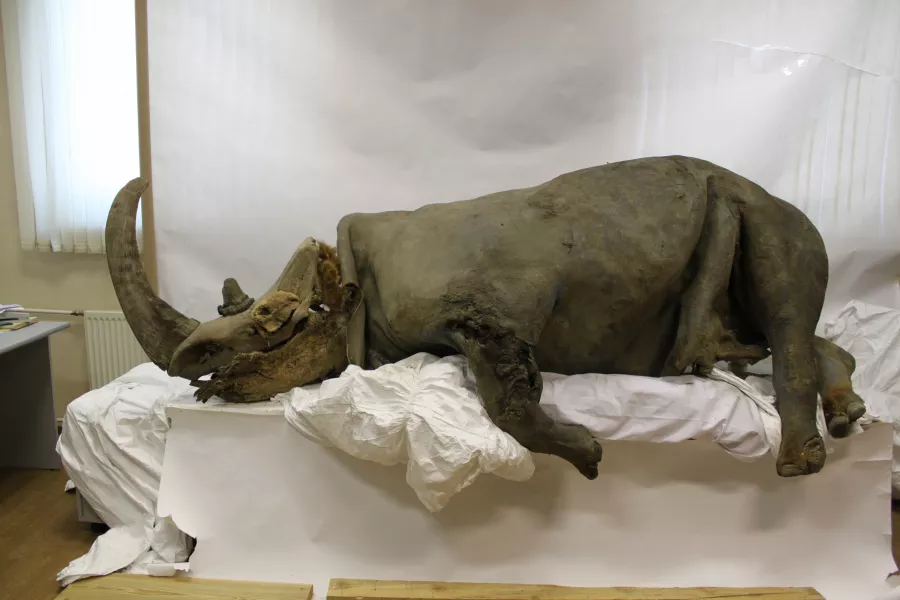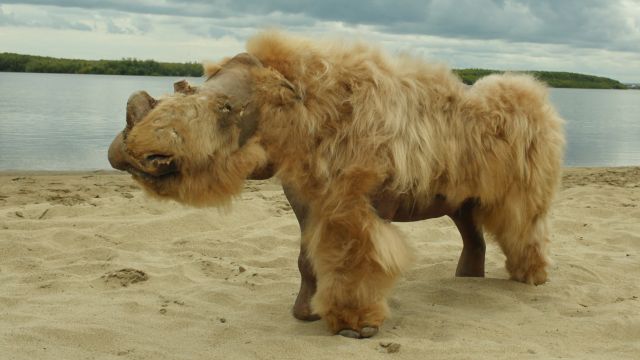The giant herbivorous creatures are thought to have roamed northern Asia and Europe during the ice ages around 350,000 years ago and genetic analysis suggests they were well adapted to living in colder climates.
While the arrival of humans has been proposed as a potential cause of extinction, evidence on this is limited.
So a team of researchers analysed ancient DNA from 14 woolly rhinos (Coelodonta antiquitatis) gathered from tissue, bone, and hair samples.

The findings, published in the journal Current Biology, showed the megaherbivores’ populations remained “stable and diverse” for more than 13,000 years following the arrival of humans.
Senior study author Love Dalen, a professor of evolutionary genetics at the Centre for Palaeogenetics, a joint venture between Stockholm University and the Swedish Museum of Natural History, said: “It was initially thought that humans appeared in north-eastern Siberia 14,000 or 15,000 years ago, around when the woolly rhinoceros went extinct.
“But recently there have been several discoveries of much older human occupation sites, the most famous of which is around 30,000 years old.
“So, the decline towards extinction of the woolly rhinoceros doesn’t coincide so much with the first appearance of humans in the region.
“If anything, we actually see something looking a bit like an increase in population size during this period.”

The researchers looked at the genome, or genetic material, of the creatures to get a picture of whether there was increased in-breeding or reduced genetic diversity – key indicators of ancient population declines among mammals.
Co-first author Nicolas Dussex, a post-doctoral researcher at the Centre for Palaeogenetics, said: “We examined changes in population size and estimated in-breeding.
“We found that, after an increase in population size at the start of a cold period some 29,000 years ago, the woolly rhino population size remained constant and that, at this time, in-breeding was low.”
The researchers said this stability “lasted until well after humans began living in Siberia, contrasting the declines that would be expected if the woolly rhinos went extinct due to hunting”.
Co-first author Edana Lord, a PhD student at the Centre for Palaeogenetics, said: “The data we looked at only goes up to 18,500 years ago, which is approximately 4,500 years before their extinction, so it implies that they declined sometime in that gap.”

As part of their DNA analysis, the researchers also found genetic mutations that helped the woolly rhinos adapt to colder weather.
One of these mutations was a type of receptor in the skin for sensing warm and cold temperatures that has also been found in woolly mammoths, they said.
Based on their findings, the scientists believe this species, which was particularly suited to the frigid north-east Siberian climate, may have declined due to the warming period towards the end of the last ice age.
Ms Lord said: “We’re coming away from the idea of humans taking over everything as soon as they come into an environment, and instead elucidating the role of climate in megafaunal extinctions.
“Although we can’t rule out human involvement, we suggest that the woolly rhinoceros’ extinction was more likely related to climate.”







